Awesome Inventions and the Movies That Inspired Them
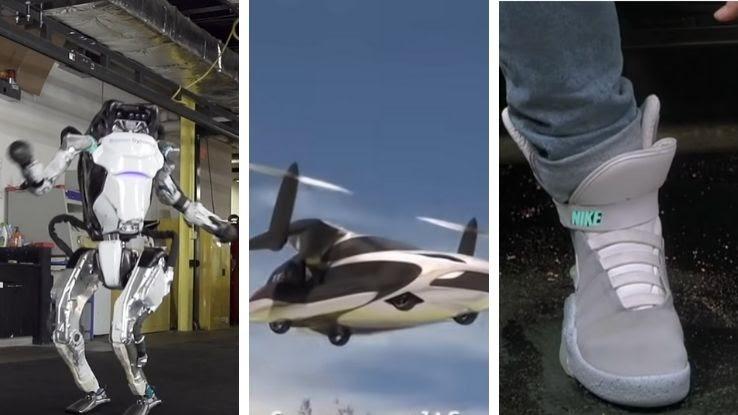
Art imitates life, but sometimes, it goes the other way around! Movies influence our collective culture, and gizmos and contraptions that exist in popular fiction become embedded in our imaginations. And sometimes, someone figures out how to make one of those imagined devices come to life. Whether through direct imitation or just absorbing the zeitgeist of the times, these movies helped inspire incredible inventions used in the real world today.
The Terminator — Advanced Flying Drones
It all seemed so futuristic back in 1984. Bi-pedal military robots? Flying drones that think for themselves with no humans involved at all? A mysterious hive-mind network called Skynet? What an imagination. That stuff will never happen, right?
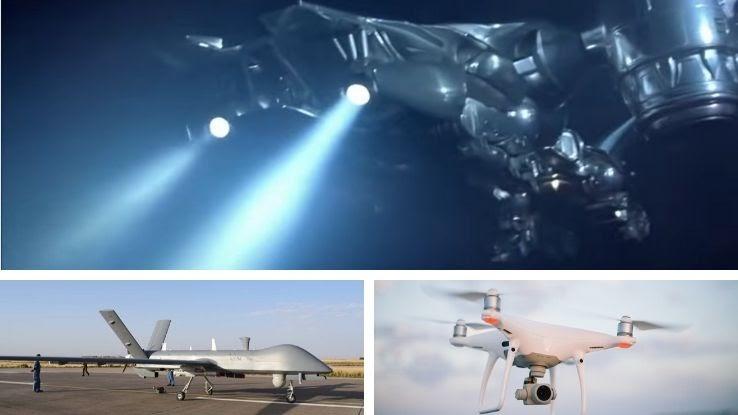
Fast-forward to 2019, and self-flying military drones almost seem quaint. The first kill by a military drone occurred in 2002. Paired with AI and the internet … the film isn’t too far off. Perhaps someone clever at the Pentagon saw The Terminator and started taking notes.
2001: A Space Odyssey — Voice Command Computer
Talking computers that responded to voice commands were first popularized in Star Trek on TV. But it wasn’t until 2001: A Space Odyssey that audiences saw a depiction of a sentient talking supercomputer that could play chess, run a starship and have a conversation all at once.
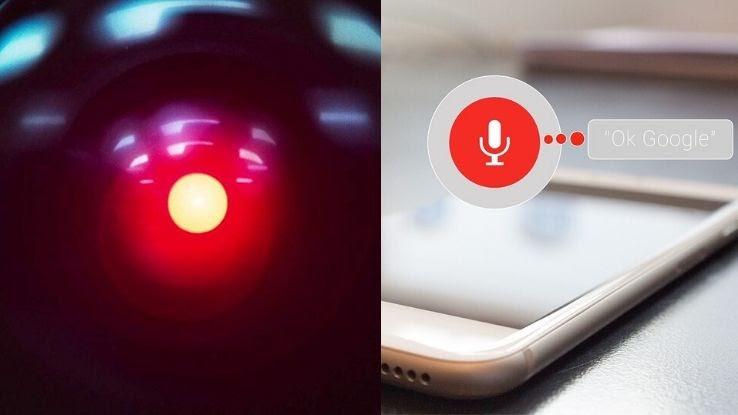
Nowadays, many of our devices respond to voice commands, but they haven’t achieved an independent consciousness. Though many were originally inspired by Star Trek, the technology is rapidly approaching HAL 9000 levels. So far, no one’s gotten hurled out of an airlock. Yet.
The Lawnmower Man — Virtual Reality Headsets
To be blunt, The Lawnmower Man was a terrible movie. However, it did introduce audiences to a craptastic 90s version of CGI virtual reality that only existed within the confines of a computer. The way one could navigate through this landscape was a VR headset and giant human-sized hamster wheel … er … gyroscope.
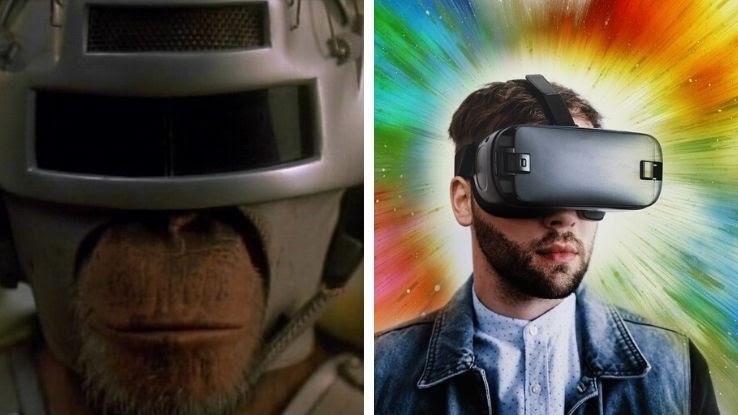
Except for the gyroscope part, however, the VR headset in the film isn’t too far off from what’s commercially available today. Sadly, the full-body spandex with neon piping has not caught on as the proper uniform in which to enjoy VR. One can dream.
The Spy Who Loved Me — The Wet Bike
The first functioning jet ski-like vehicle that most audiences ever saw made its debut in the James Bond movie The Spy Who Loved Me in 1977. This was a real, functioning water vehicle called a “wet bike”, not a special effect. It actually existed, but it wasn’t sold on the wider market until 1978.

Sit-down versions of jet skis and other crafts similar to a wet bike, like the Sea-doo, were not widely available until the late 1980s. Was James Bond the reason they caught on? Maybe.
Total Recall — Flatscreen TVs
Total Recall aimed to capture the near-future, not the distant one, and with the exception of Mars being a colony, everything in the film looks like a variation of what we might have today.
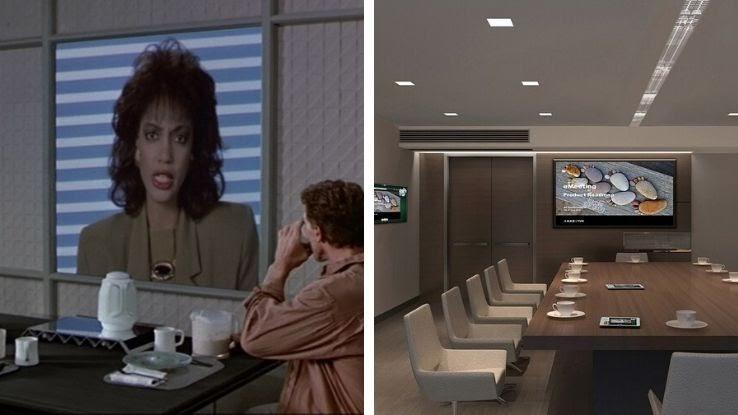
One thing the movie predicted particularly well was the advent of giant flat-screen TVs for consumers. The creators even got the aspect ratio of the widescreens mostly correct. Although we don’t use giant flatscreen TVs as landscapes in our homes, some businesses do use giant LED screens to promote films or display other advertising.
Star Trek: The Motion Picture — Flip Phones
The flip phone-style communication device was first seen in Star Trek the original series. When it became a movie franchise with Star Trek: The Motion Picture, the creators slightly modernized the device’s look to make it seem more contemporary.

Interestingly, the crew never held this device to their ear, like a regular phone. They always flipped it open to activate the channel and used it as one might use a speaker-phone. Just like Star Trek communicators, modern flip phones can track location (albeit via satellite) and connect to a computer network.
Minority Report — Motion-Based User Interfaces
How cool was it in 2002 when Tom Cruise pulled out his motion gloves in Minority Report and started manipulating images in the air with his hands? We didn’t know it yet, but a very similar version of that technology would be available in a matter of a few years, not decades.
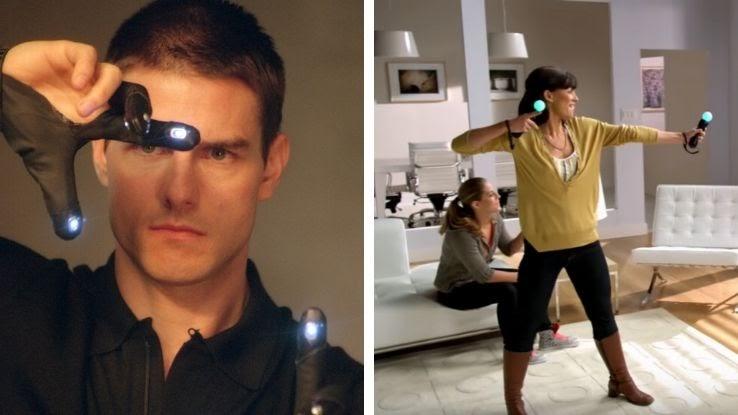
First, the hand movements are very similar to the gestures used on a touch screen to enlarge and browse images. Second, video games that used a motion-based interface or remote became widely available as early as 2006.
Blade Runner — Digital Billboards
The digital billboards seen in Blade Runner were another piece of technology that seemed distant and cool back in 1982. We don’t yet have flying cars or replicants running around, but most major cities have at least a few giant digital billboards that light up the night sky.
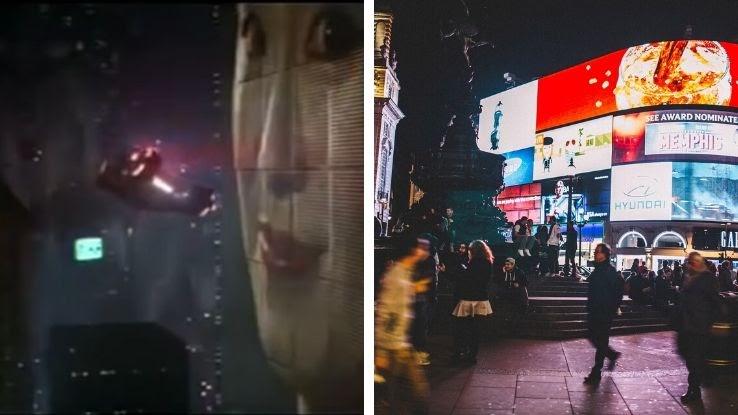
London and New York have notable displays in some of their tourist trap areas, but Las Vegas is the city that has embraced the technology completely, with digital billboards practically everywhere you look. The advent of LED technology helped make it possible.
Star Wars: A New Hope — Cleaning Robot
Remember that cute little imperial squeaky robot that Chewbacca scared away on the Death Star in Star Wars: A New Hope? That was an MSE Repair Droid, used for secure communications, minor repairs and polishing floors. It was completely autonomous with no human needed to operate.
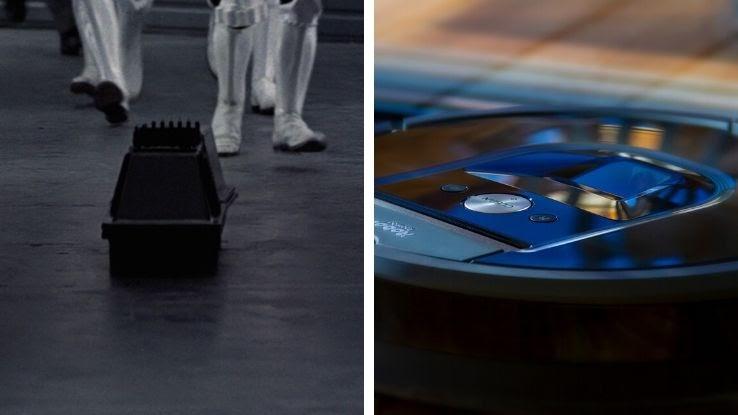
While we don’t have the same thing for repair yet, we do have Roombas, which are little disc-shaped robots capable of self-navigating and vacuuming your whole floor autonomously. Unlike the MSE, they feel no emotions and thus cannot be scared away by Wookies.
2001: A Space Odyssey — Commercial Space Travel
2001: A Space Odyssey was a huge breakthrough in hard science fiction and special effects in movies. Released in 1968, it just barely predated the moon landing, yet it believably predicted a time when human beings will have conquered our solar system. In this world, commercial space travel is as common as commercial domestic flights.
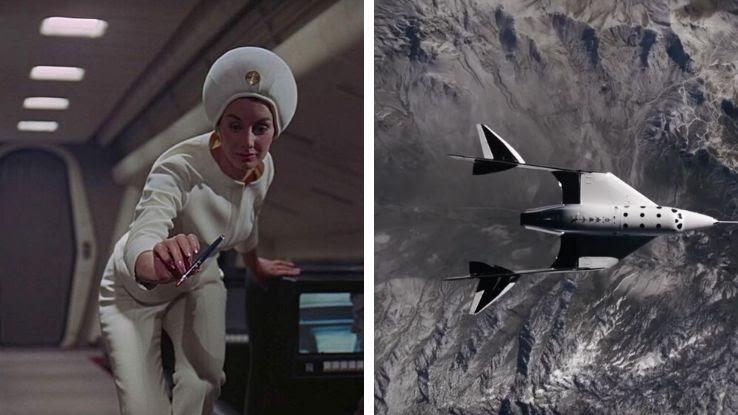
We’re not quite there yet, but we’re inching closer to commercial passenger space flights, with several companies claiming they will start flights very soon. In certainly less than a decade, this will be a reality.
Forbidden Planet — Humanoid Robots With AI
Forbidden Planet (1954) wasn’t the first sci-fi film to predict humanoid talking robots, but it was the first one that made them popular. In the movie, Robby the Robot functioned as an artificially intelligent servant. It could hold conversations and walk around on its own.
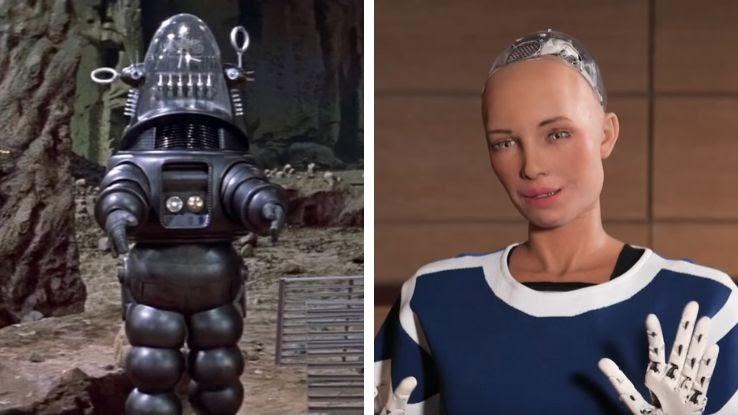
Today, Sophia is an artificially intelligent humanoid robot designed to look like a human female, right down to her gestures and facial expressions. She recently held a fascinating conversation with motivational guru Tony Robbins. Saudi Arabia even granted her citizenship.
Back to the Future Part II — Hoverboard
In a behind-the-scenes documentary on 1989’s Back to the Future Part II, the producers mentioned that hoverboards were already possible but never released due to safety concerns. That turned out to be a bit of a good-natured joke, but fans still hungered for one.
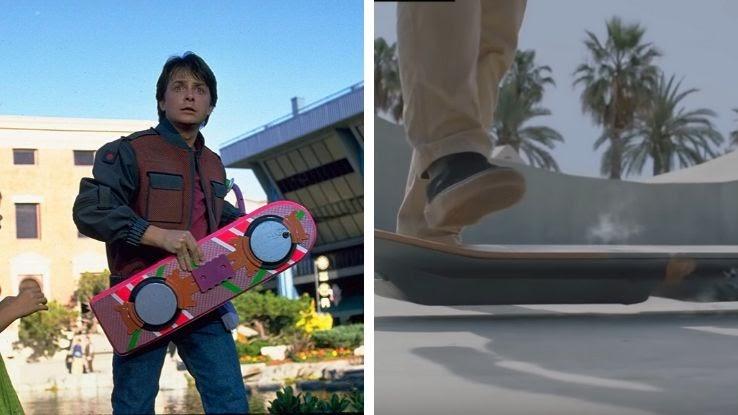
After decades of research, something like the technology has come to pass. Lexus made a functioning hoverboard, but with one caveat: it can only hover on a special track with embedded magnets. Hey, it’s a start.
Demon Seed — The Smart Home
Demon Seed had an unusual premise for a 70s horror film. In it, a scientist created an artificially intelligent computer, Proteus, that became obsessed with the scientist’s wife. The computer soon takes over the house, giving “smart home” a sinister new meaning.
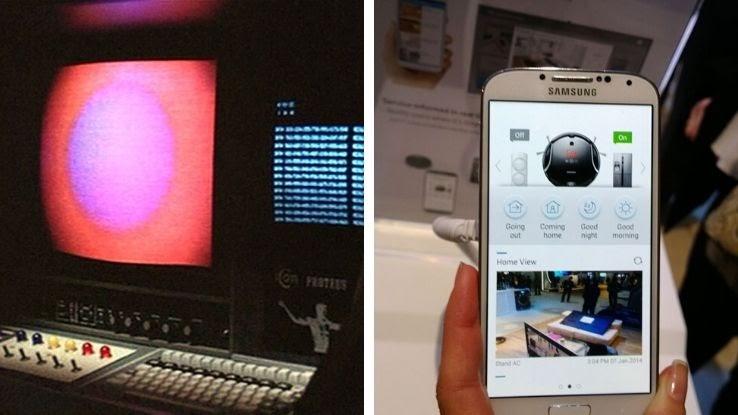
“Intelligent” devices in the home are all the rage these days, with everything from refrigerators to thermostats to doorbells to stand-alone gizmos getting linked to computers. Proponents tout their convenience, while critics express concerns over privacy and security. Despite worries of “Big Brother” in one’s own home, intelligent homes are gaining popularity fast.
Harry Potter and the Sorcerer’s Stone — Cloaking Device
Invisibility technology has appeared in everything from science fiction works like Star Trek and Predator to the Harry Potter franchise. In the latter, Harry puts on a cloak, and everything concealed by the cloak’s outer fabric becomes invisible.
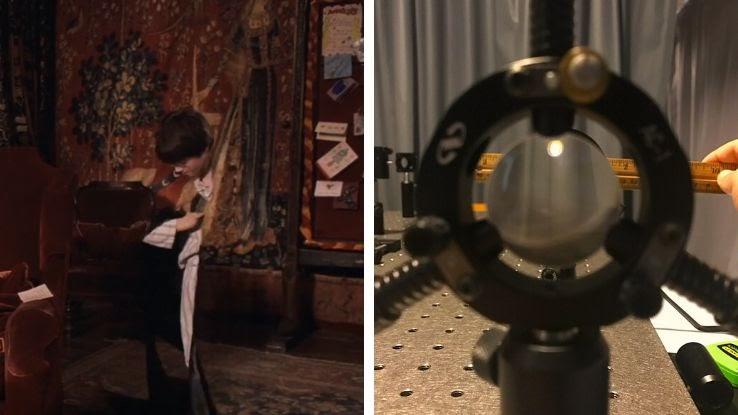
In the real world, we do have special lenses that can conceal an object by bending light around it. Anyone on the other side of the lens isn’t able to see anything in the sweet spot. This is still an experimental technology, although it’s sure to develop further.
Tron — Teleportation of Atoms
Protagonist Flynn gets sucked into a computer world in 1982’s Tron after an evil AI uses atom digitizing technology that can transport atoms from one place to another. A beam breaks down an object, stores it and then reconstructs it somewhere else entirely.
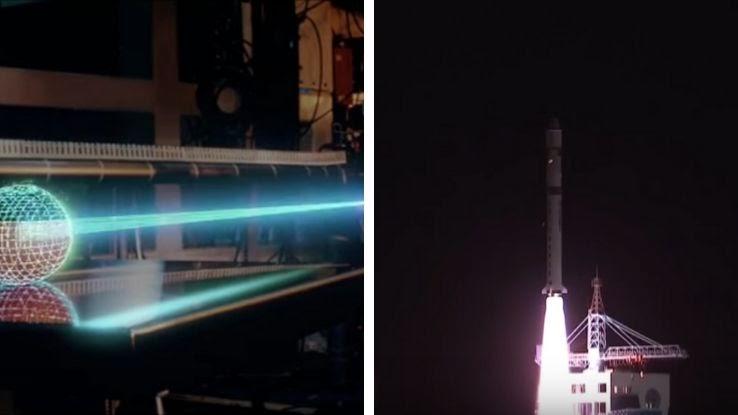
While a similar technology is depicted in Star Trek, Tron‘s version is a little bit closer to real life. A recent Chinese experiment teleported a photon on Earth to a satellite orbiting the planet. Photons are easier to teleport than atoms, but real teleportation of objects may soon be imminent.
Star Wars: A New Hope — Direct Energy Weapons
In Star Wars: A New Hope, the Death Star fired its primary laser for the first time and destroyed a planet. This was an example of a direct-energy weapon, now known by the military as a DEW for short.
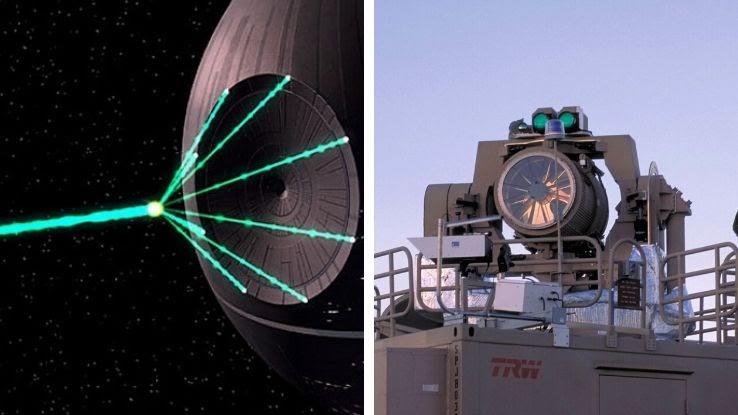
Former president Ronald Reagan was also a proponent of building a system of satellite weapons as a defense against ballistic missiles, later nicknamed Star Wars. When the Cold War ended, support for the program waned. However, direct-energy weapons, such as high-intensity lasers, have since been developed. They’re designed by the military mostly for shooting down incoming missiles.
Star Trek IV: The Voyage Home — Transparent Aluminum
In Star Trek IV: The Voyage Home, the crew travels to San Francisco in 1986 to abduct whales to bring back to the future and save the world. To do this, they must create a tank in the cargo hold that’s light enough and strong enough to hold the whales and water for them.
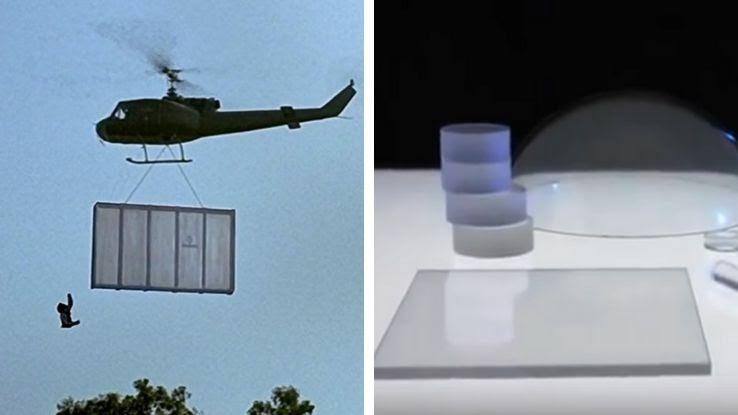
The problem is, they need transparent aluminum to do this, and no such thing exists in 1986. Chief Engineer Scotty ends up finding another engineer and helps him invent it. In present times, transparent aluminum is a reality. It’s also bulletproof!
Back to the Future Part II — Nikes With Power Laces
One of the coolest future inventions in the world of Back to The Future Part II was the high-top Nike sneakers with power laces. There was immediate interest among fans for the shoe, but unfortunately, no such thing existed back in 1989.

In the movie, power-lace shoes premiered in 2015. When the year actually came along, Nike released the 2015 Nike Mag with Power Laces to commemorate the film. To fans’ delight, they actually work and look exactly like their sleek counterparts in the movie.
Aliens — Steady-Cam Mounted Gun
James Cameron has always been a pioneer. For his hit-film Aliens, Cameron imagined a co-ed military force with state of the art gear, like helmet-cams, motion detectors and heavy artillery mounted on a stabilizing arm attached to the soldier’s body.

In reality, Cameron took a steady-cam rig and adapted it so it could mount a gun. Cameron’s rig was so inventive, that many gun enthusiasts decided to try it themselves, to mixed results. Though the military does experiment with stabilizing aim, it’s not clear if they use a similar contraption.
2001: A Space Odyssey — Videophones
Videophones have been in popular culture for a long time, with one of the earliest depictions being in 1962 with The Jetsons TV show, but it was 2001: A Space Odyssey that made them seem realistic and functional.

In truth, primitive video phones have been available for decades but weren’t practical until the mid-1990s. We just didn’t have the computing power to process the data. Now that everyone carries a combined video camera, telephone and supercomputer in their pockets, visual calls are as easy and cheap as pushing a few buttons.
The Terminator — Bi-Pedal Humanoid Military Robots
We have flying military drones already, but we’re a long way off from bi-pedal artificially intelligent robots with guns, aren’t we? Right? Well, you might hope so but … it’s not looking good.
A robotics company called Boston Dynamics has been releasing videos of humanoid robots for years. At first, they were able to walk and go upstairs. Now they can roll, jump, flip,and practically do a gymnastics floor routine. Just install an AI, house some heavy artillery on its arms and it’s time to call Sarah Connor.
Chitty Chitty Bang Bang — Flying Cars
Chitty Chitty Bang Bang was both the name of a movie and of the flying car in it. At the press of a button, the steampunkish car could sprout wings and propellers and fly into the air.
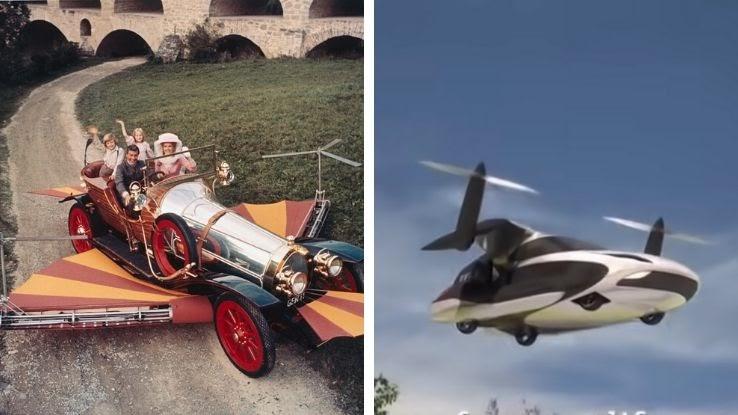
A true flying car should be able to drive legally on the street and fly in the air, making it distinct from other aircraft. There have been several companies working on a real flying car over the years, with one of the most recent for sale being the TFX (pictured).
GoldenEye — Laser Watch
Who wouldn’t want to have a laser watch, especially if it’s as cool as the one in the James Bond movie GoldenEye? Yes, the laser watch appeared in previous Bond movies, but here it looked its best. Such a watch is great for escaping when you’re stuck on a runaway train.
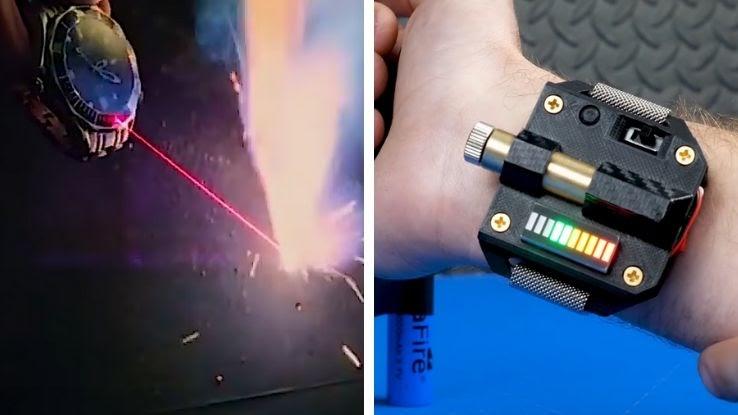
For obvious liability reasons, no one is actually selling a laser watch. However, a few inventor-hobbyists have posted their homemade versions online, all with real lasers that can actually ignite stuff. Some get so excited they forget to put the timepiece in!
2001: A Space Odyssey — Tablet Computers
It’s a close contest between Star Trek and 2001: A Space Odyssey over which one came up with more inventions we use today. Both featured tablet computers, but it’s 2001 that created a machine that looks most like the tablet computers we use today.

In the film, they use it much like we do: for practical programs as well as for full-screen video and communication. There’s something incredibly satisfying about using current technology that seemed so sleek yet so far off when it was first imagined in a film.
Total Recall — Self-Driving Cars
Total Recall imagined self-driving cars back in 1990, though things haven’t turned out exactly the way the film imagined. In the movie, the self-driving car comes with a humanoid robot that operates the vehicle, presumably to make passengers feel more at home.
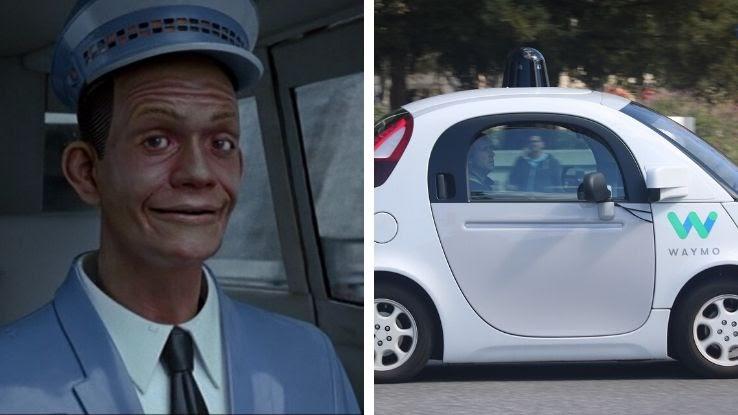
In reality, self-driving cars are empty in the driver’s seat, and they’re already on the road in some markets. While it will still be a long time before most people feel safe getting into a completely automated car, the dawn of that age is already upon us.
Star Wars: Attack of The Clones — Digital Movie Cameras
This one is a little meta. George Lucas wanted to push the digital camera industry forward, so he planned to shoot The Phantom Menace all on digital film, but the technology wasn’t quite ready yet.
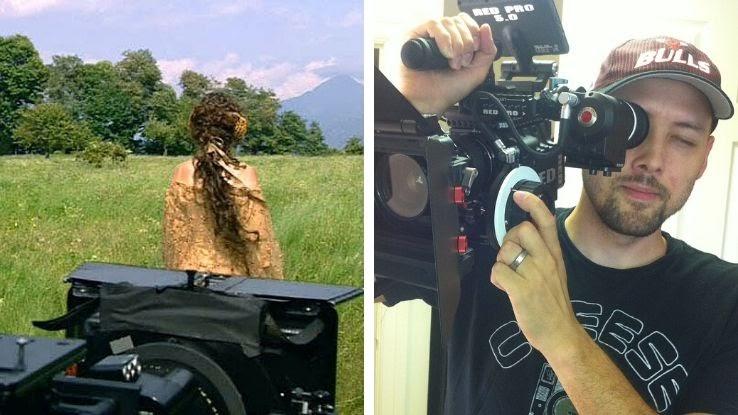
For Attack of the Clones, he went fully digital and pioneered new practices in digital filmmaking and encouraged other directors to jump in. This changed the whole industry. Today, shooting on real film is rare, and nearly everyone shoots on digital. One big plus: film stock is expensive, so shooting digitally saves filmmakers thousands of dollars.
Minority Report — Personal Advertising
There’s a great scene in Minority Report where Tom Cruise walks inside a mall and holographic sensors recognize his retinas and offer him personal advertising, such as pants in his size. They are like futuristic pop-up ads that know way too much about you.
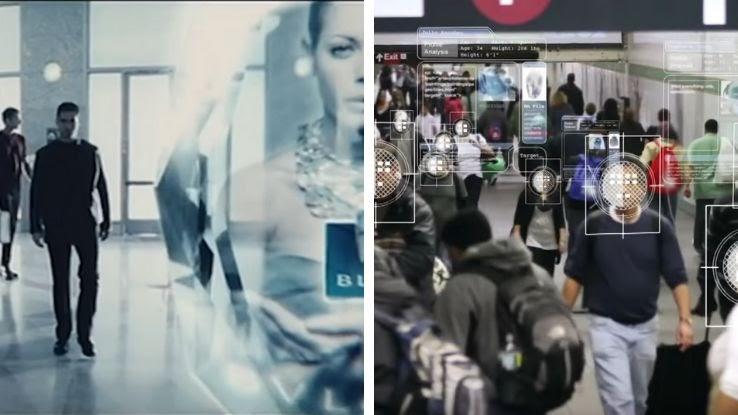
We don’t have holographic pop-up ads yet, but we do have social media and shopping apps that learn all kinds of things about you the more you use them. And if you shop on Amazon, it sometimes knows what you want to buy before you do.
Star Trek: The Motion Picture — The Smartwatch
There are hints of the smartwatch in old movie serials such as Buck Rogers and in comic strips like Dick Tracy, but the movie smartwatch that most resembles the one people can buy today is Captain Kirk’s smartwatch in Star Trek: The Motion Picture.
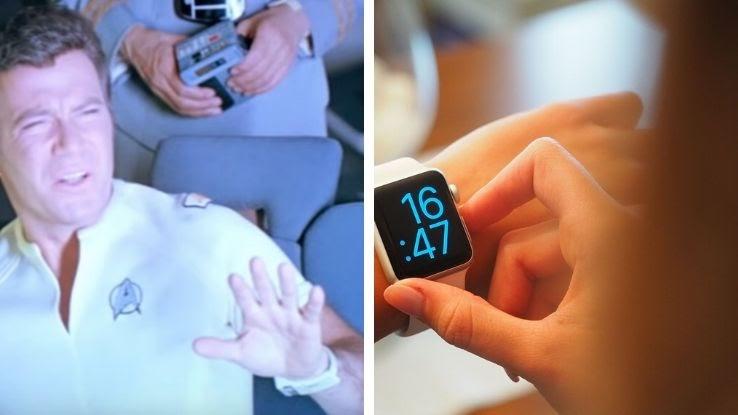
Rumor has it that Apple Watch designers used its aesthetic as inspiration for the design of their watch. Admittedly, Kirk’s wrist communicator (pictured) looks fresh off the Apple Store’s shelves. Actually, come to think of it, his entire white outfit does, too.
Frankenstein — Genetic Engineering
Genetic engineering, even when technology was more primitive, always had an aura of taboo around it. Books and films such as Frankenstein served as warnings not to tinker with the fundamental building blocks of the universe.

But misusing great knowledge is just what some scientists seem to do. More than 20 years ago, scientists cloned their first sheep. Nowadays, who knows what they are up to? Many nations are attempting to enforce rules, but they seem to do little to stop forbidden experimentation, such as combining animal and human DNA.
The Hitchhiker’s Guide to the Galaxy — In-Ear Translator
In the quirky film (and book series) The Hitchhikers Guide to the Galaxy, space tourists have a peculiar form of language translation technology. They carry arround a Babel Fish, an alien creature you stick in your ear. The fish crawls inside your brain and translates all languages for you. Ew.
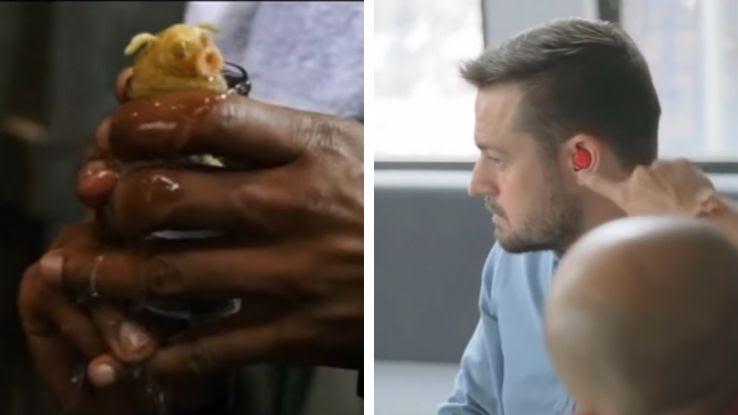
This may have served as the inspiration for a device currently under development called the Pilot. It looks like a hearing aid and translates foreign language into your own in real-time so that you can hear and understand words as they are spoken.






